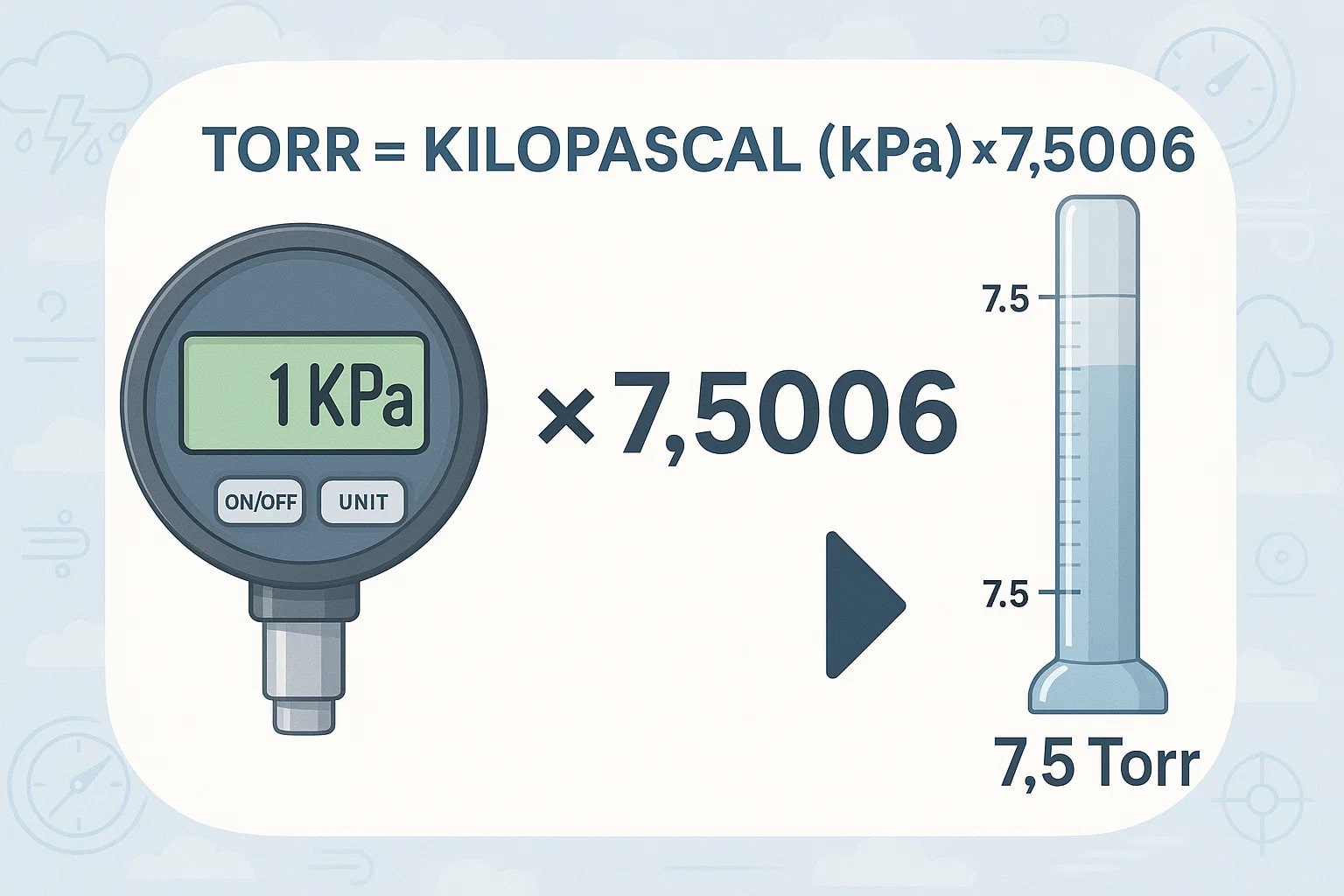kilopascal to torr – How to convert kPa to Torr
Pressure is measured in different units depending on the field. Scientists often use the kilopascal (kPa), while chemists and medical researchers still rely on the torr. Converting kilopascal to torr is essential in areas like vacuum physics, meteorology, and medicine, making it one of the most practical unit switches in science.
What is a kilopascal (kPa)?
A kilopascal equals 1,000 pascals, where one pascal is one newton per square meter. It’s part of the SI system and widely used in engineering, meteorology, and material science to express pressure values.
What is a torr?
A torr is a unit of pressure named after Evangelista Torricelli, who invented the barometer. One torr is defined as 1/760 of an atmosphere, which equals approximately 133.322 pascals. It’s commonly used in vacuum measurements and medical fields like anesthesia.
How to convert kilopascal to torr
Torr = Kilopascal (kPa) × 7.5006
Example:Torr = 20 kPa × 7.5006 = 150.01 Torr

If you don’t want to calculate manually, the Conversion Tools on Jetcalculator can instantly give you the result. For pressure-related conversions, the Speed Converter may also be handy.
Do you know?
-
About kilopascal: Weather forecasts often report atmospheric pressure in kPa. At sea level, standard pressure is about 101.3 kPa.
-
About torr: In medical research, blood oxygen pressure is sometimes measured in torr, helping doctors monitor critical patient conditions.
Torricelli and the First Barometer
The torr is named after Evangelista Torricelli, an Italian physicist and mathematician who built the first mercury barometer in 1643. By observing how mercury rose and fell inside a glass tube, Torricelli discovered that the air around us has weight — and that pressure could be measured.
This breakthrough gave birth to the torr unit and laid the foundation for modern meteorology. Without Torricelli’s work, forecasting storms or designing pressure-sensitive instruments might have taken centuries longer. Every time you convert kilopascal to torr, you’re connecting modern science back to one of the first great discoveries in atmospheric physics.

Precision Across Fields
From weather stations to hospital rooms, converting kPa to torr ensures that data stays consistent across disciplines. Multiply by 7.5006, and you can move between SI units and traditional scientific language with ease. Just as Torricelli’s glass tube opened the door to understanding air pressure, today’s conversions keep science, engineering, and medicine speaking the same language.

